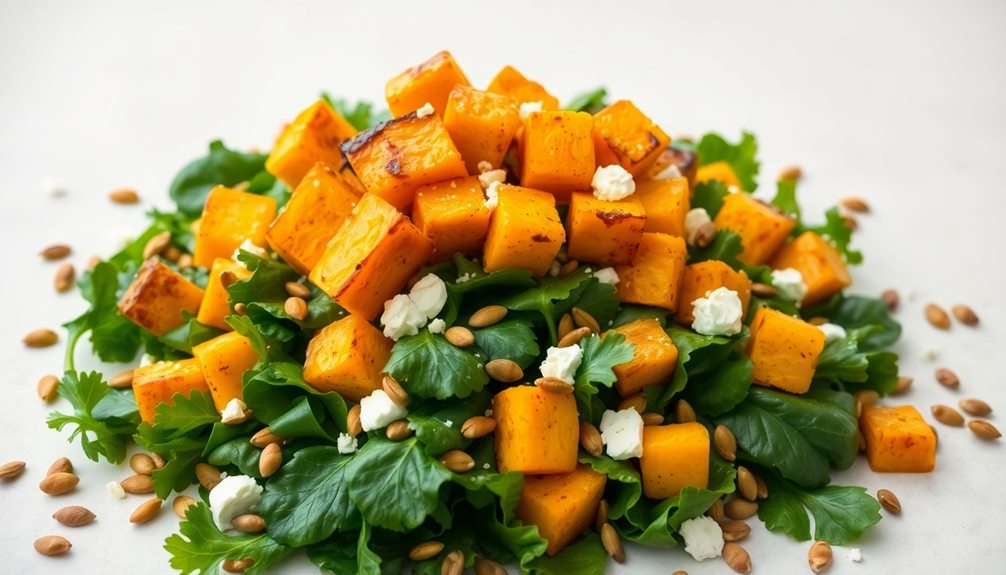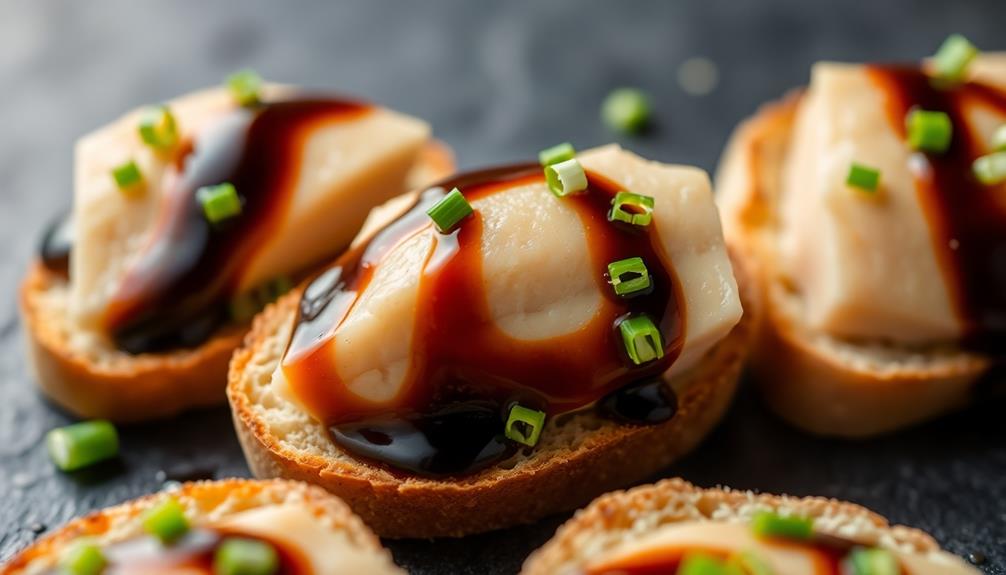Kabocha salad – the sweet and nutty Japanese pumpkin dish! You'll love how this winter squash melts in your mouth. First, peel and chop the kabocha into bite-sized pieces, then roast it to perfection. Whisk up a mouthwatering sesame dressing and toss it with the kabocha. For added crunch and flavor, fold in roasted chestnuts and toasted sesame seeds. The combination of soft, sweet kabocha and crunchy, nutty toppings creates a harmonious medley. This healthy, versatile dish works wonderfully as a side or main course. And there's more to discover about this beloved Japanese ingredient…
Key Takeaways
- Kabocha is a winter squash integral to Japanese cuisine for centuries, with a rich history dating back to the 16th century.
- Kabocha's versatility in Japanese culinary practices includes roasting, steaming, and stir-frying, making it a popular ingredient in various dishes.
- The salad features roasted kabocha cubes, a sesame-based dressing, and crunchy roasted chestnuts, creating a harmonious blend of sweet and nutty flavors.
- Toasted sesame seeds provide an earthy crunch and visual appeal, complementing the soft texture of the roasted kabocha.
- Kabocha salad is a healthy and versatile dish that can be served as a side, main course, or topping, appealing to a wide range of cuisines.
History

Kabocha, a type of winter squash, has been a staple in Japanese cuisine for centuries. This vibrant, rounded gourd has a dark green exterior and a bright orange flesh that's sweet and nutty.
In fact, the word "kabocha" comes from the Portuguese "cambodja," which means "Cambodia." The Portuguese first encountered this squash variety in Southeast Asia and brought it back to Japan in the 16th century.
Over time, Japanese chefs and home cooks discovered all the incredible ways to prepare kabocha. They roasted, steamed, and stir-fried it, adding it to soups, curries, and even desserts.
Kabocha's versatility and delicious flavor made it a beloved ingredient throughout the country. Today, you'll find kabocha in markets and grocery stores, ready to star in all kinds of tasty dishes – including the classic Japanese kabocha salad you're about to learn how to make!
Cooking Steps
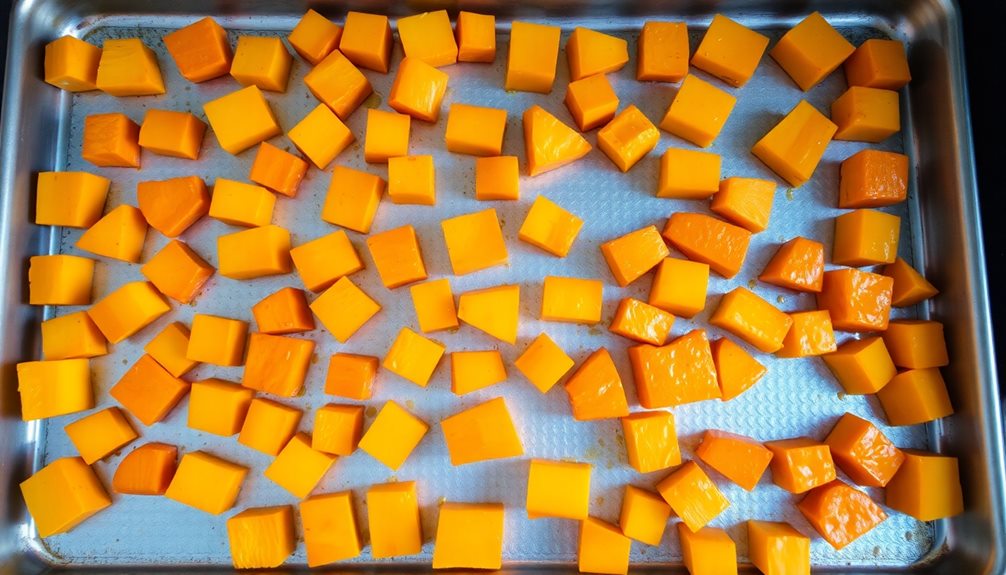
Preparing the kabocha squash is the first step in the salad-making process. Start by grabbing a sharp knife and carefully slice the squash in half. Scoop out the seeds and stringy bits from the center using a spoon.
Next, place the squash halves cut-side down on a baking sheet and roast them in the oven until they're nice and tender, about 30 minutes.
Once the kabocha is all roasted and cooled, it's time to dice it into bite-sized pieces. Toss the cubed squash into a big salad bowl.
Now, let's add some crunchy nuts like toasted almonds or cashews. Sprinkle them over the top.
Finally, whisk together a simple dressing of olive oil, rice vinegar, a touch of honey, and a pinch of salt and pepper. Drizzle the dressing over the salad and gently toss everything together.
Voila! Your kabocha salad is ready to be enjoyed.
Step 1. Peel and Chop Kabocha Squash
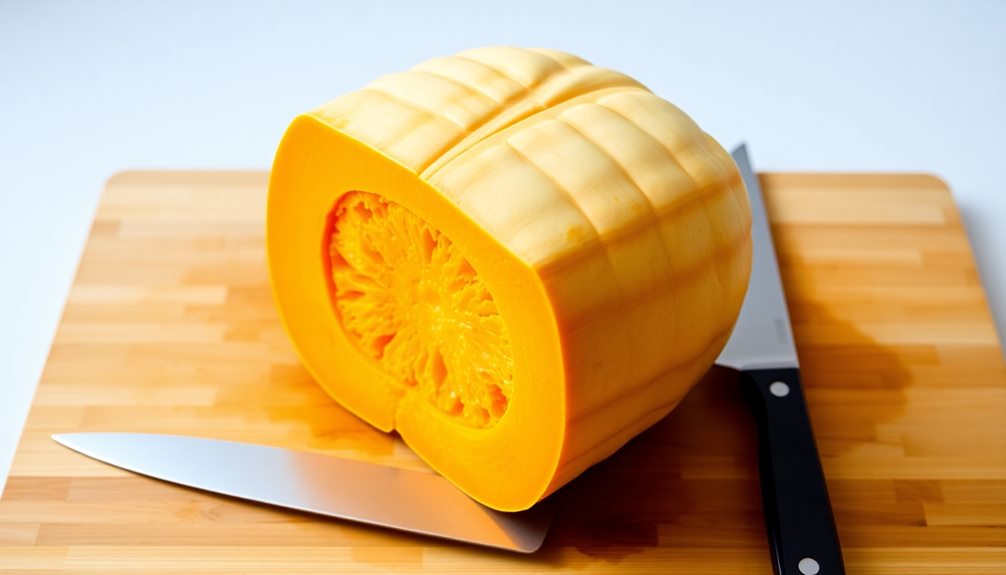
Start by grabbing a sturdy knife and cutting board. You'll need to peel the thick, dark green skin off the kabocha squash.
Take it slow and be careful – those skins can be tough! Once the skin is removed, slice the squash in half. Scoop out the seeds and stringy insides, then cut the flesh into 1-inch cubes.
The key is to chop the kabocha into even, bite-sized pieces. This will help them cook evenly and make the salad easy to eat. As you work, try to keep the cubes as uniform as possible.
Don't worry if they're not perfect – a little variation adds character!
Once all the squash is chopped, you're ready for the next step. Gather your other salad ingredients and let's start assembling this delicious kabocha creation.
The sweet, nutty flavor of the kabocha is about to shine!
Step 2. Roast Kabocha With Olive Oil
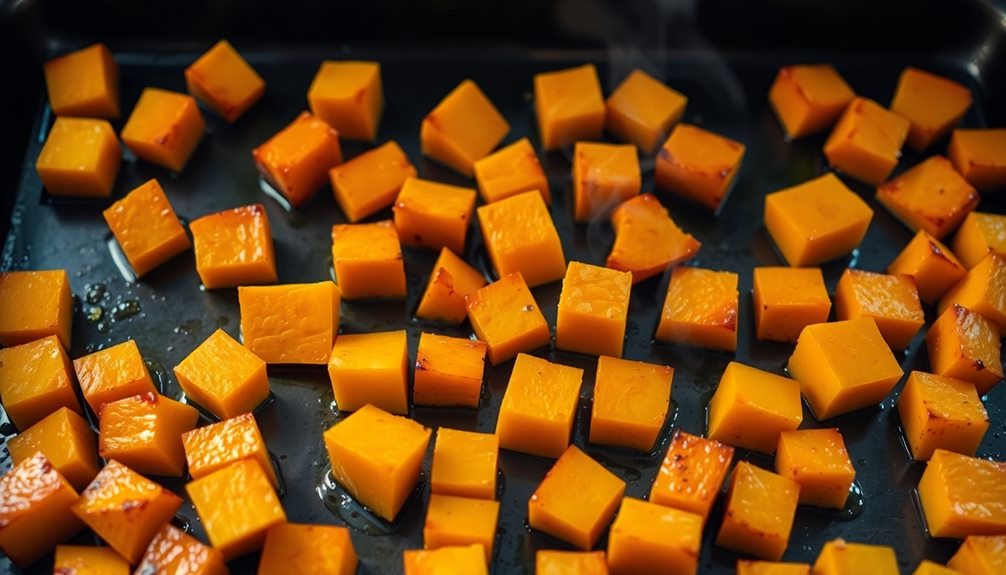
Preheat your oven to 400°F (200°C). Grab your peeled and chopped kabocha squash from the previous step. Drizzle the chunks with olive oil, making sure they're evenly coated.
Season with a pinch of salt and pepper, then toss to combine.
Arrange the seasoned kabocha pieces in a single layer on a baking sheet. Slide the sheet into the preheated oven and let the squash roast for 20-25 minutes. Give it a gentle stir halfway through to ensure even browning.
You'll know the kabocha is done when it's tender and caramelized around the edges.
Once roasted, remove the baking sheet from the oven and let the kabocha cool slightly. The roasting process will bring out the natural sweetness and nutty flavor of this Japanese pumpkin.
Now you're ready to assemble your delicious kabocha salad!
Step 3. Dress With Sesame Dressing
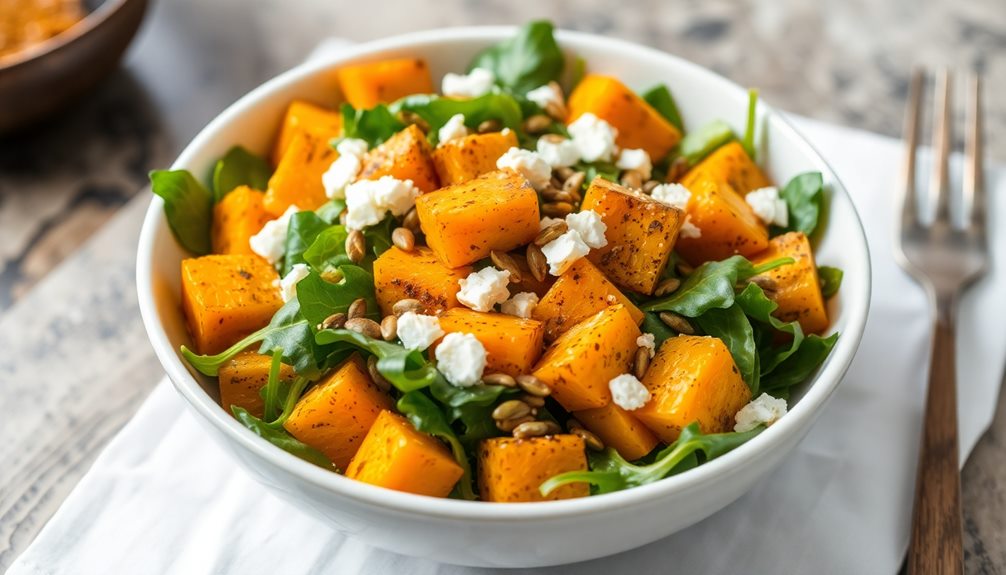
How do you dress the roasted kabocha to create the perfect kabocha salad? It's all about the sesame dressing!
First, whisk together the nutty sesame oil, tangy rice vinegar, and a touch of soy sauce. This creates a savory-sweet elixir that will make your taste buds dance.
Next, add a sprinkle of sugar and a pinch of salt to balance the flavors. Don't be shy – you want the dressing to really sing! Grate in a bit of fresh ginger for a zing of warmth and brightness.
Now, drizzle the sesame dressing over the roasted kabocha cubes. Use your hands to gently toss everything together, making sure each piece is evenly coated. The sweet pumpkin will soak up all that delicious dressing, creating a harmony of flavors in every bite.
Step 4. Toss With Roasted Chestnuts

To elevate the kabocha salad even further, toss in some roasted chestnuts. The nutty, toasted flavor of the chestnuts complements the sweetness of the kabocha perfectly.
Simply roast the chestnuts in the oven until they're golden brown and tender, then roughly chop them into bite-sized pieces. Gently fold the roasted chestnuts into the salad, making sure they're evenly distributed.
The contrast of the soft, creamy kabocha and the crunchy, earthy chestnuts creates a delightful textural experience in every bite. Plus, the chestnuts add a touch of elegance and sophistication to the dish.
The roasted chestnuts not only enhance the overall flavor but also provide a satisfying crunch that takes the kabocha salad to the next level. This simple addition turns the salad into a truly special and memorable dish.
Step 5. Garnish With Toasted Sesame Seeds
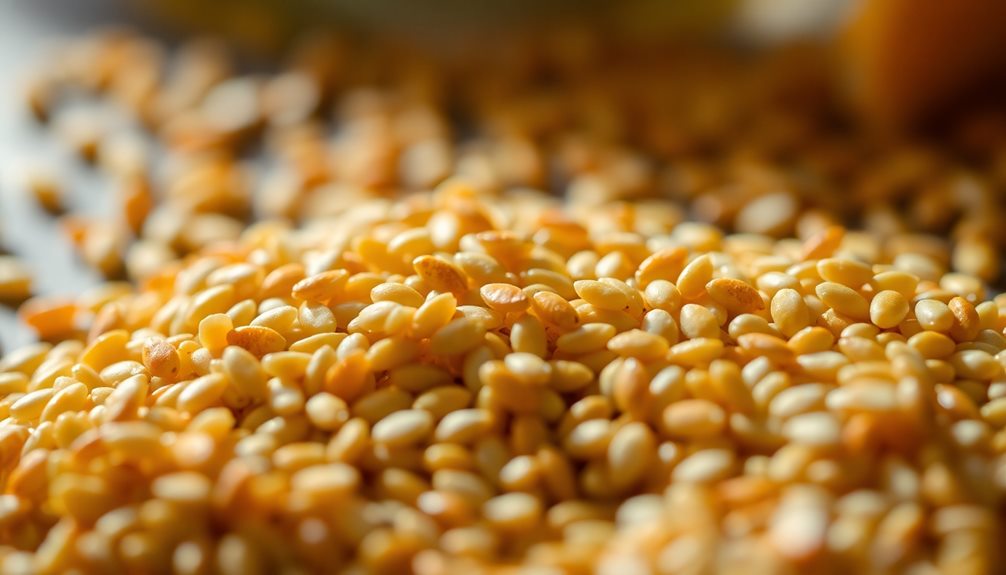
Toasty sesame seeds lend a delightful crunch and nutty aroma that elevates the kabocha salad. Simply toast the sesame seeds in a dry skillet over medium heat, stirring frequently, until they're golden brown and fragrant. This takes just a few minutes, so keep a close eye on them to prevent burning.
Sprinkle the toasted sesame seeds over the top of the salad, letting them scatter across the surface. Their earthy, rich flavor perfectly complements the sweet pumpkin and roasted chestnuts.
The crunchy texture also adds a satisfying contrast to the soft, tender kabocha cubes. Feel free to use a combination of black and white sesame seeds for a visually stunning presentation.
The dark and light colors create an eye-catching garnish that makes the salad even more appetizing. Finish it off by giving the salad a final toss, ensuring the sesame seeds are evenly distributed throughout.
Final Thoughts

Ultimately, what makes this kabocha salad a delightful dish is its harmonious blend of flavors and textures. The sweet and nutty kabocha pumpkin is the star, complemented by the crunchy toasted sesame seeds and the tangy dressing.
The salad's vibrant colors and presentation are also a delight for the senses, making it a feast for the eyes as well as the palate.
One of the best things about this recipe is its versatility. You can enjoy it as a side dish, a light main course, or even as a topping for grilled meats or roasted vegetables.
The flavors work beautifully with a wide range of cuisines, from Japanese to Mediterranean to American. Plus, it's a healthy and satisfying option that's sure to please everyone at the table.
Frequently Asked Questions
What Is the Nutritional Value of Kabocha Pumpkin?
You'll find that kabocha pumpkin is packed with nutrients. It's high in vitamin A, vitamin C, and fiber, making it a healthy and versatile ingredient in your diet. Plus, it has a delightfully sweet and nutty flavor.
How Long Can Kabocha Pumpkin Be Stored?
You can store kabocha pumpkin for up to 3 months if you keep it in a cool, dry place. Its thick skin helps preserve its freshness, making it a versatile and long-lasting vegetable for your kitchen.
Can Kabocha Be Substituted for Other Types of Pumpkin?
Yes, you can substitute kabocha for other types of pumpkin. Kabocha has a similar texture and sweetness, making it a suitable replacement in most recipes that call for pumpkin. Just keep in mind the flavor may be a bit nuttier.
Is Kabocha Pumpkin Suitable for Vegetarians and Vegans?
Yes, kabocha pumpkin is suitable for vegetarians and vegans. As a versatile squash, it's an excellent plant-based ingredient that can be prepared in various ways to fit a vegetarian or vegan diet.
What Are the Health Benefits of Eating Kabocha?
Eating kabocha provides numerous health benefits. It's rich in vitamins A and C, which support immune function and eye health. The high fiber content aids digestion, while the antioxidants may help reduce inflammation and lower disease risk.
